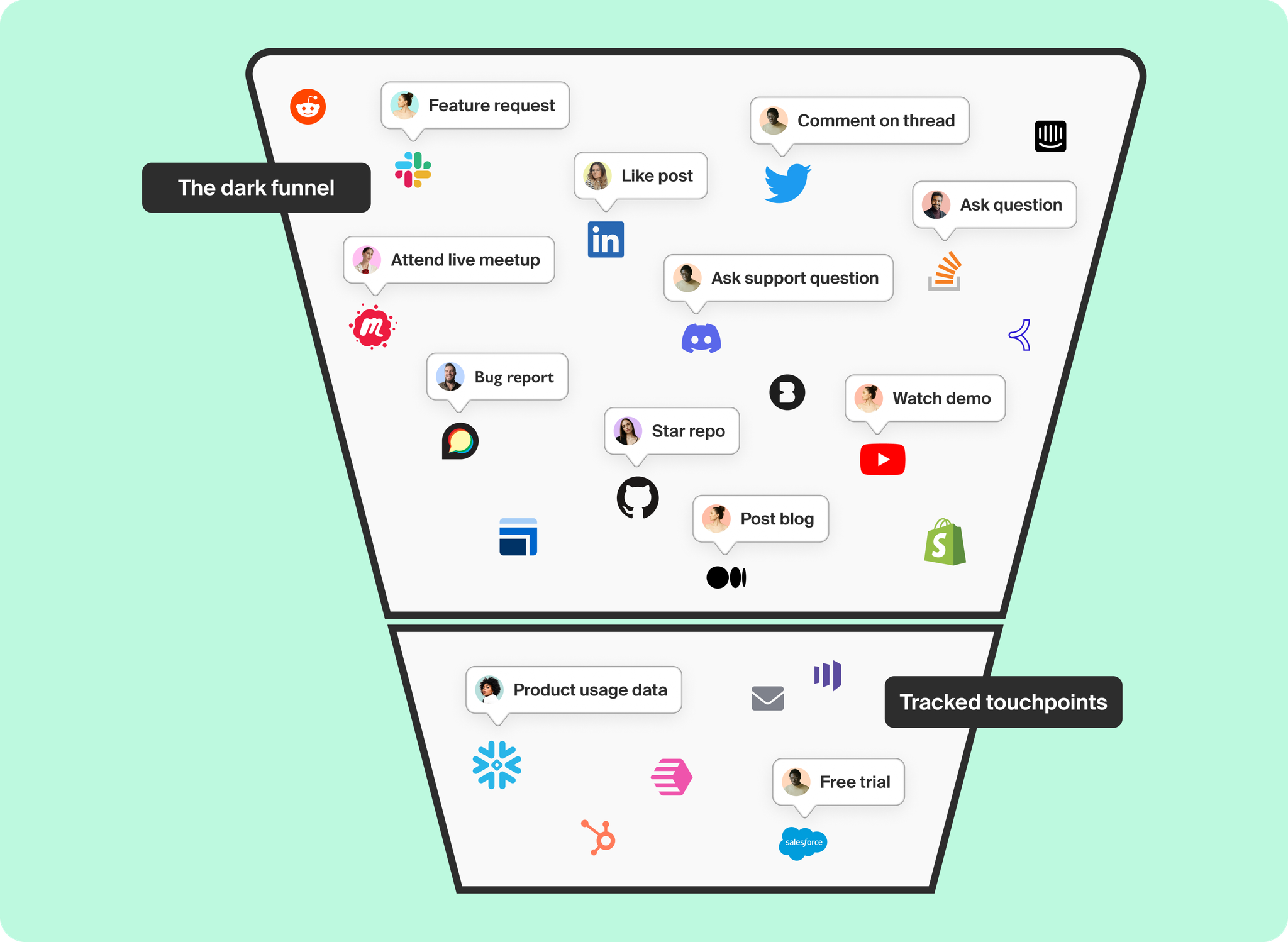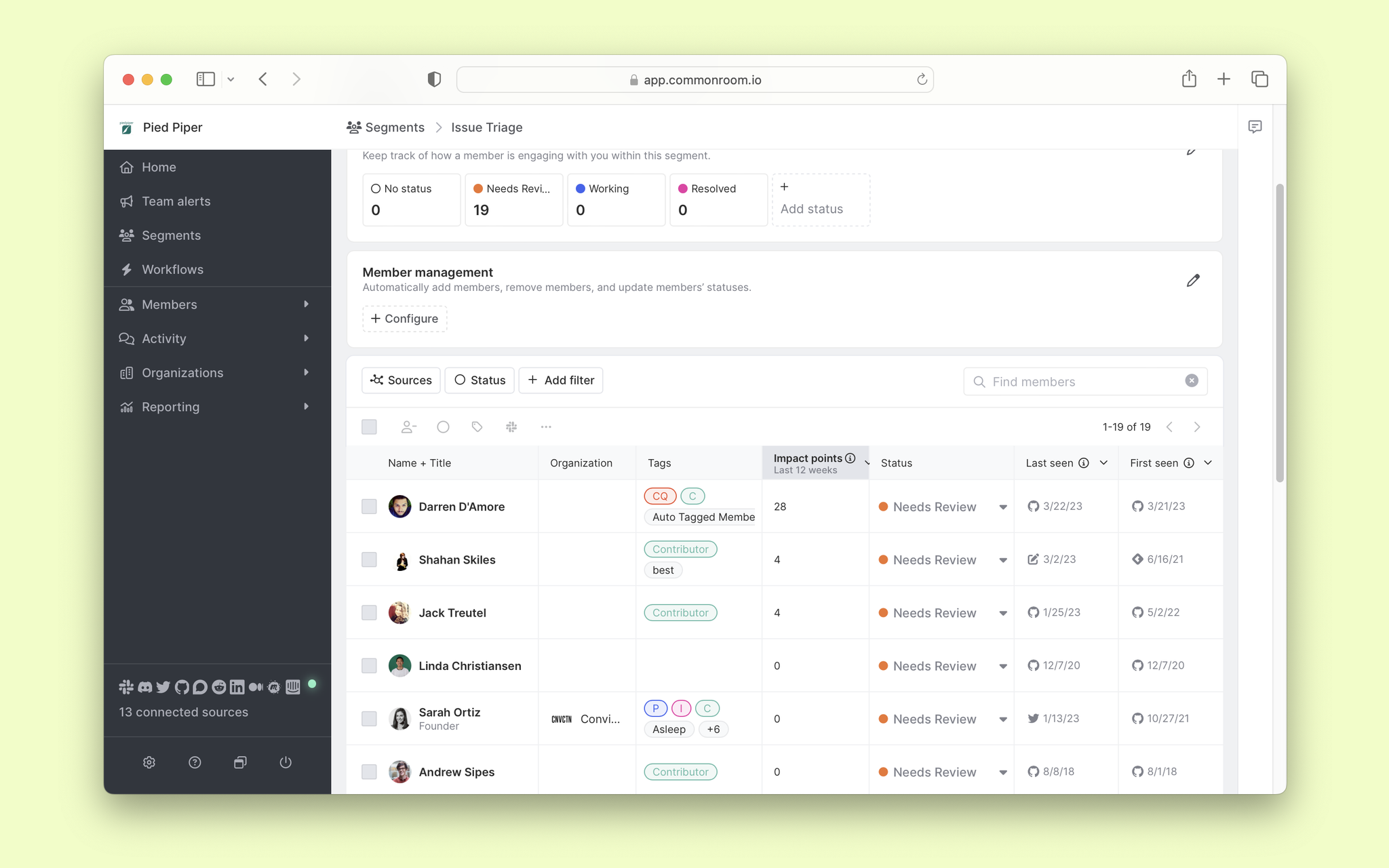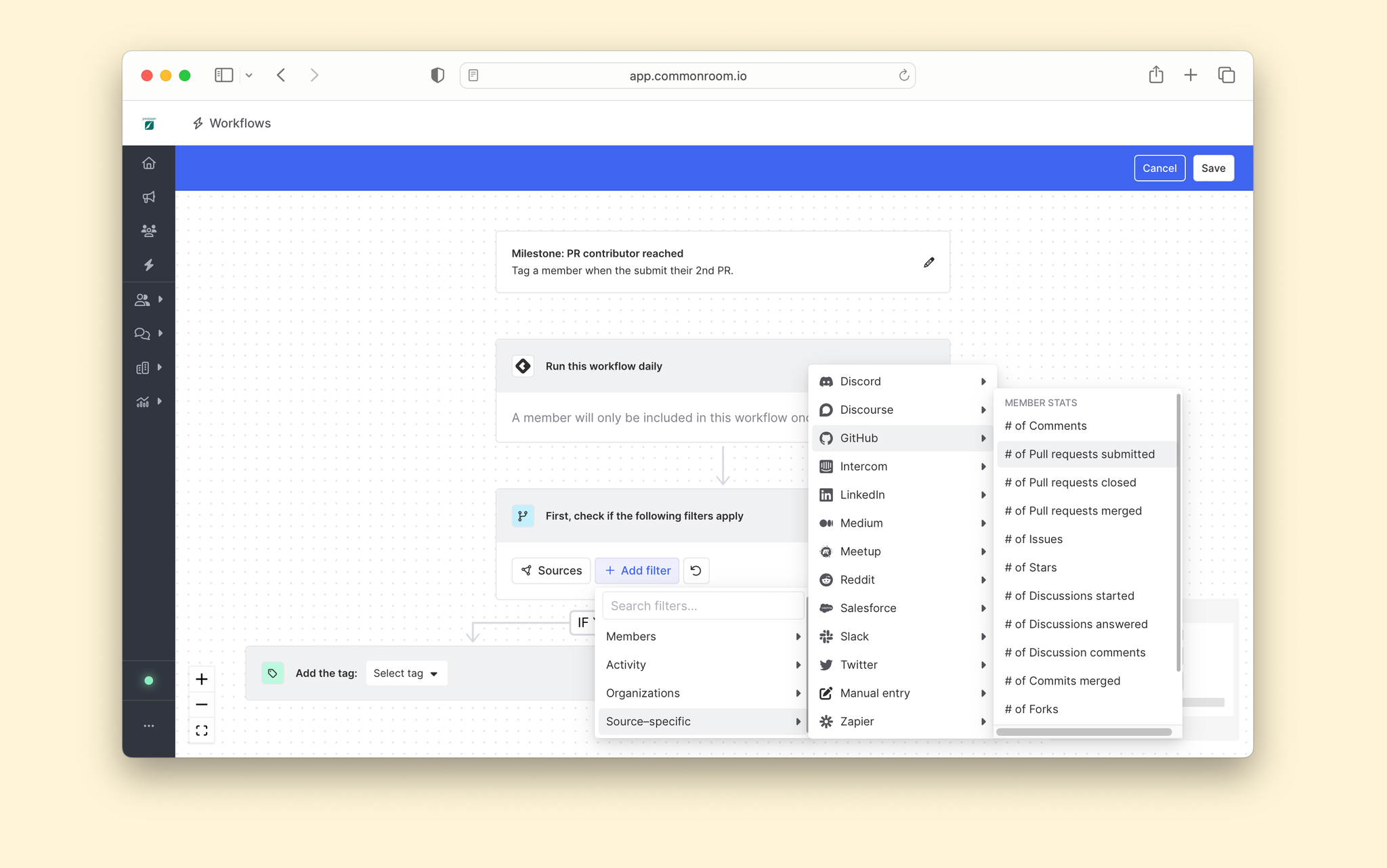The best deals don’t just close—they grow.
It’s not just that acquiring new customers is a lot more expensive (and time-consuming) than holding on to the ones you already have. It’s also that your current customers are much more likely to buy from you again (as in 60-70% more likely).
But you can’t boost retention rates—let alone pitch your customers on cross-sells or upsells—if the customer journey is a black box. Let’s face it: Customers don’t always share how they’re feeling—at least not with their mouths and not directly with you.
You need to be able to spot churn risks and expansion opportunities as they happen—and take action on them just as quickly.
Learn how modern go-to-market teams:
- Clear renewal roadblocks
- Transform buyers into brand advocates
- 10x customer lifetime value
ARR is a marathon, not a sprint
The key word in “annual recurring revenue” is “recurring.” The subscription-based revenue model breaks down if you’re filling a leaky bucket.
Getting customers through the door is half the battle, but it’s only step one. You need them to keep coming back (and, ideally, expand with you).
Your average restaurant diner will tell you if their food is cold. Your average B2B buyer? Not so much.
If your customers run into product issues (or see something they like on another menu), they won’t hesitate to ask for the check and move along. And it doesn’t help that they’ll often start out with an appetizer before committing to a main course (no more restaurant analogies, we promise).
Marketing, sales, customer success, and support teams all play a crucial role in preventing customer churn and fueling account growth. But more often than not, they’re operating in the dark.
That’s because the signals and context they need to deliver better customer experiences are hidden in the dark funnel. And even if they were able to track them, there’d still be no way to connect the dots from one team to the next.

Your customers send out signals related to churn, account expansion, and more every single day—just not where you can see them. They’re having conversations and taking actions across an enormous range of digital touchpoints, some owned by you and many more obscured from view. These online communities are where customers ask questions, share experiences, and connect with other product users (aka surface churn risks and upgrade opportunities).
You can’t afford to hire people to monitor every single channel 24 hours a day. And even if you could, you still wouldn't be able to spot every signal.
So customer experience suffers. Churn rates go up. Cross-sell and upsell rates go down. And GTM teams race to convert new customers to make up for the dip in revenue.
Unless you equip your teams with the tools they need.
You can’t spot a hand raised in the dark
Your customers don’t have your account executives on speed dial (and they’re certainly not calling them up to warn them about jumping ship).
They’re asking peers and other product users for help in Slack communities. They’re sharing their frustrations in forums like Reddit and Stack Overflow. They’re watching how-to videos on YouTube. And they’re (gulp) sourcing product replacements on LinkedIn.
We live in a product-led growth world, but product usage data doesn’t paint the full picture of the customer journey. And while you can add as many notes as you want to a customer profile in your CRM, you’ll only ever know what your customers tell you directly.
Product analytics will tell you what customers did yesterday. CRMs will tell you what customers said today. But the activity in your dark funnel will tell you what customers are planning to do tomorrow.
GTM teams can try to be proactive, but there’s no way to get ahead of churn risks, address product issues, or uncover relevant buyer behaviors without visibility into the full customer journey.
And what goes for churn goes for cross-sells and upsells. Your community—whether it’s one you own or one you don’t—plays a critical role in customer acquisition. You can bet it plays one in how willing a customer is to grow with you.
But the modern tech stack—even with all its data and automations—won’t tell you everything you need to know to retain and grow customers.
To drive customer success, win longer-term commitments, and inspire account expansion, you need to be able to anticipate problems, spotlight opportunities, and proactively address both:
| Track the entire customer journey | Spot the signal from the noise | Take action and automate |
|---|---|---|
Connect all your critical customer touchpoints in a single place. | Identify and prioritize the people behind key customer behaviors. | Simplify and scale how teams stay alerted to and follow up on issues or opportunities. |
Our research uncovered that organizations that engage with communities adopt 3x more features than organizations that don’t. Meanwhile, community members are more likely to respond to each other (28%) than a company’s internal teams (13%).
Community activity isn’t just a goldmine of actionable insights—it’s a flywheel that fuels customer growth and engagement.
But you can only help it spin if you can see it.
Maximize customer lifetime value using Common Room
Common Room helps you find and take action on dark-funnel activity in real time. That way GTM teams can:
- Get a 360-degree view of account health, sentiment, and risk all in one place.
- Set up alerts and views for issues or questions and reduce time to respond.
- Identify and nurture product champions to address issues and create content that’s helpful for educating customers.
- Segment existing customers nearing product utilization or who match your ICP for account expansion.
- Uncover new use cases and product usage details for high-value accounts.
The result is faster issue resolution, higher customer retention, and more account growth.
Here’s how modern GTM teams make it happen:
Shed light on the full customer journey
Your first step is combining all relevant data—community, product, and customer—in Common Room. This supplies you with a unified view of the customer journey from end to end.
Data is automatically merged to resolve customer identities and fill in firmographics. This gives you full visibility into the identity and behaviors of individuals and their organizations no matter where they are in the sales cycle.

🎤 “We have community members across a bunch of different platforms and Common Room helps us aggregate all of that and be able to report on it, which is incredible."
—Anna Filippova, Senior Director of Community and Data at dbt Labs
Get proactive insights
Next you can use Common Room to automate activity reporting.
This helps you make sure your customers are receiving the support they need in the channels where they spend their time (you can also use Common Room’s reporting to track your team’s median time to first response across different channels, as well as how quickly other community members are responding to each other).

🎤 “By seeing all the questions a member is asking in Slack together with their Discourse forum posts, we’re able to provide answers with more context and even proactively identify where certain community members could use assistance to avoid them abandoning the product."
—Ryland Goldstein, Head of Product at Temporal
Beyond customizable alerts, you can also stay up to date on job changes among existing customers.
This helps you be the first to congratulate and reconnect with former customers and product champions who switch companies (and get ahead of churn risks).

Once you’re confident you’re on top of key customer signals, you can dive deeper into your customers’ interests and attitudes.
This helps you discover and proactively address customer challenges or negative sentiment across all connected channels.

🎤 “Common Room allows us to quickly see what our hundreds of thousands of community members are talking about across all our channels and the sentiment of those conversations. We can identify trends across topics or dive into specific topics to get a better understanding of the prevalent conversations in the Webflow community.”
—Matthew Munger, Senior Product Expert at Webflow
You can also use Common Room to see who’s influencing community activity.
This helps you cultivate product champions and create rewards systems for community members to educate others, empower your customer base, and build brand affinity.

🎤 "I'm very data-driven, and when it comes to community intelligence and workflows, I've never seen anyone do it as comprehensively or as elegantly as Common Room. Nothing else in the market is close."
—Jared Jones, Head of Ecosystem at Moov
Simplify relationship building
You can filter and segment your community based on the attributes and behaviors of individuals or the organizations they represent.
This helps you zero in on key accounts. Then you can add those people and organizations to dedicated segments.
You can quickly create customer cohorts—such as high-risk accounts or high-fit customers who are solid opportunities for cross-sells and upsells—to report and take action on all at once.
And you can do that even faster with automated workflows.
This helps you create and engage customer segments quickly and scalably.

🎤 "The platform serves up a dashboard with recently inactive members. I can filter this list by source, previous activity level, segment, and more to quickly find folks I want to message to bring them back into the community conversation. Common Room workflows also provide the ability to automate broader nurture campaigns sent as direct messages."
—Max Pete, Community & Customer Support Lead at SuperHi
Higher customer lifetime value comes down to signals—seeing them and responding to them. Modern GTM teams use Common Room to do both.
Keep customer lifetime value growing and growing with Common Room
Ready to see how Common Room helps you retain and grow your customers at scale?


